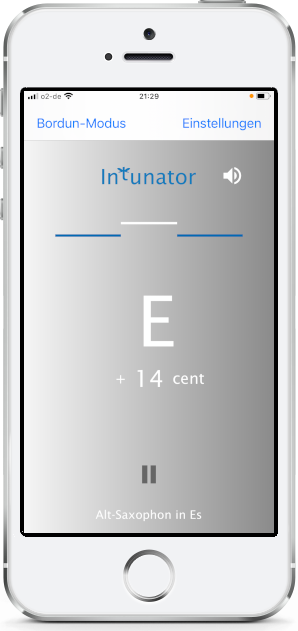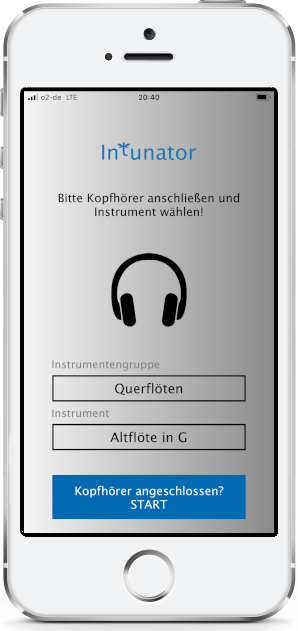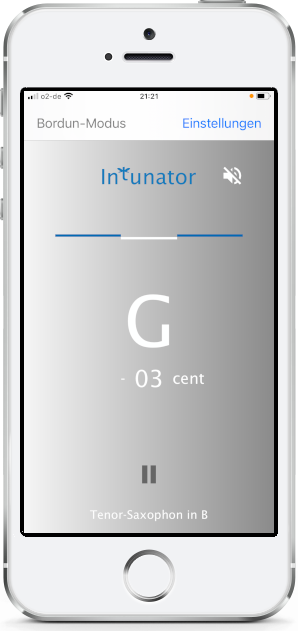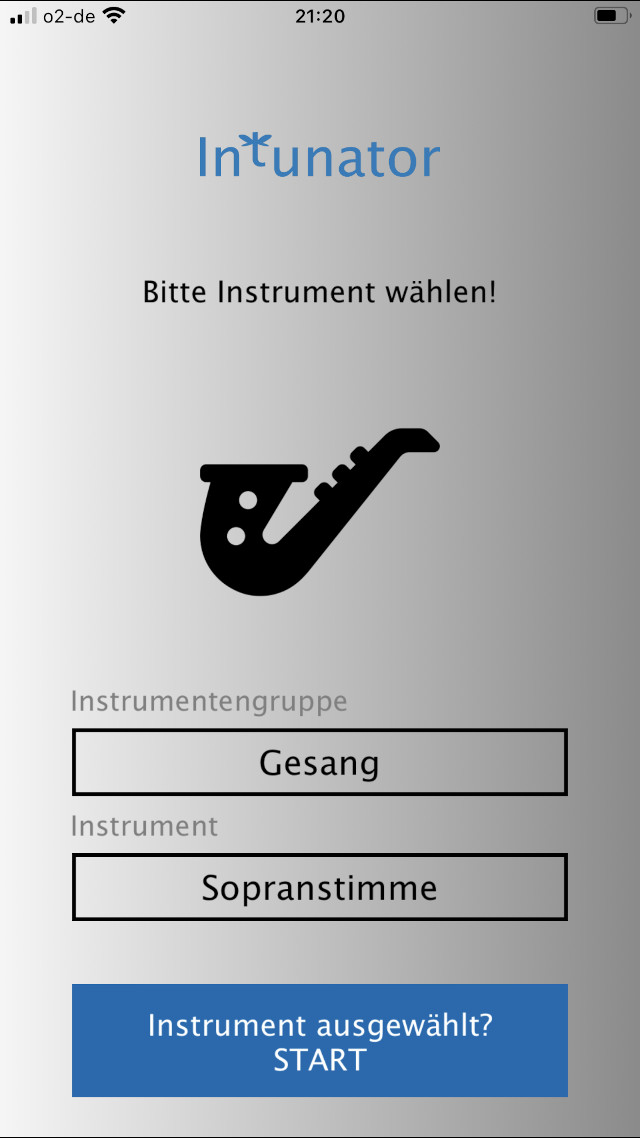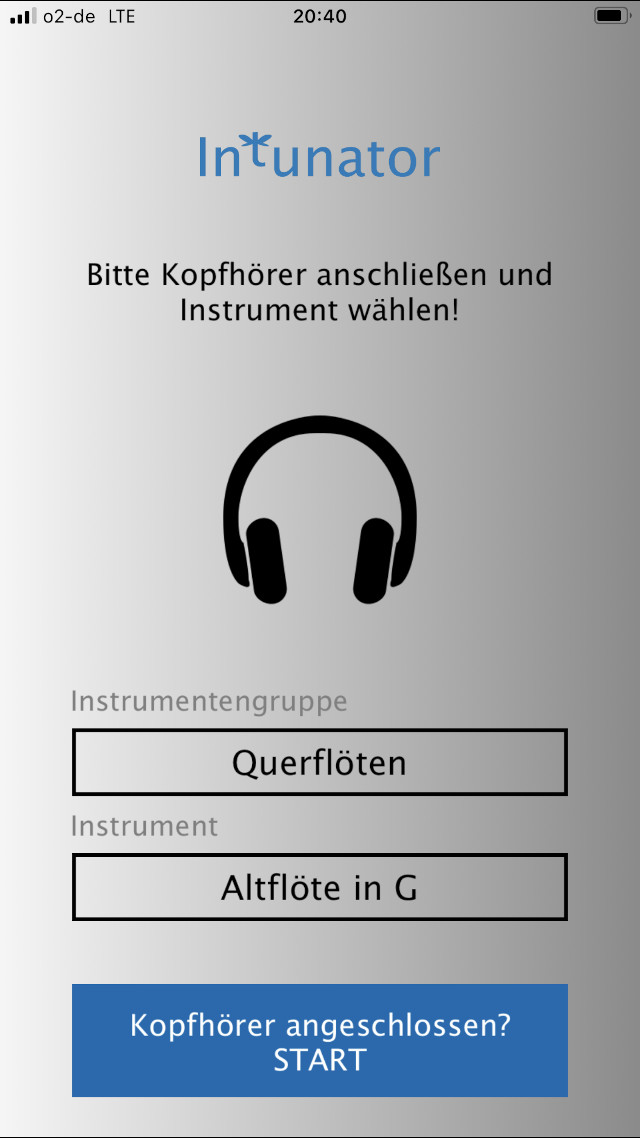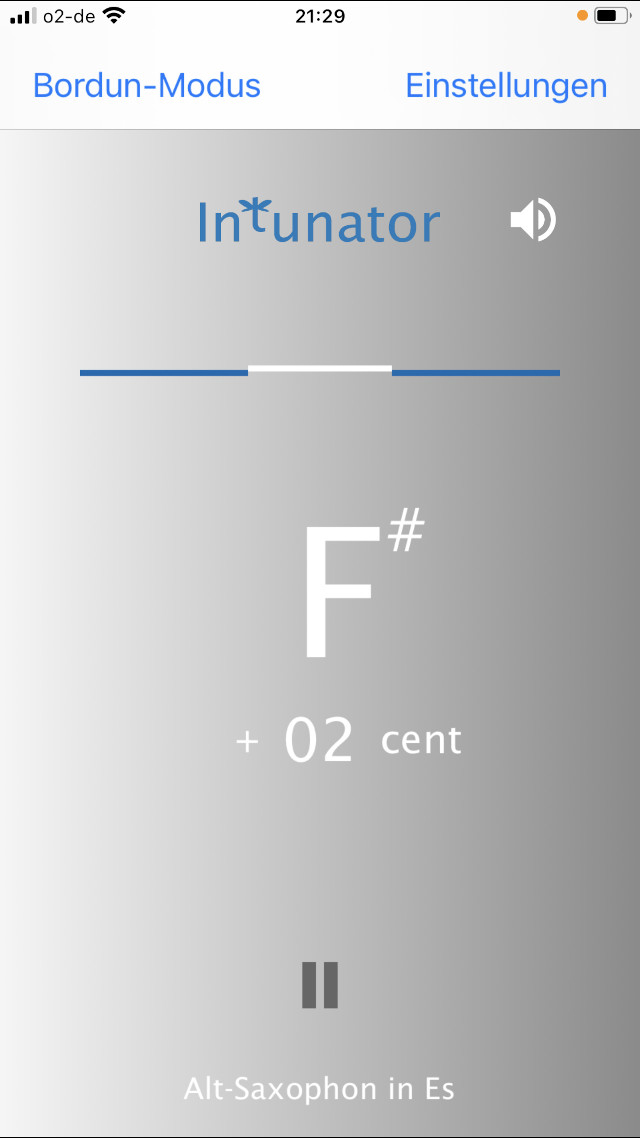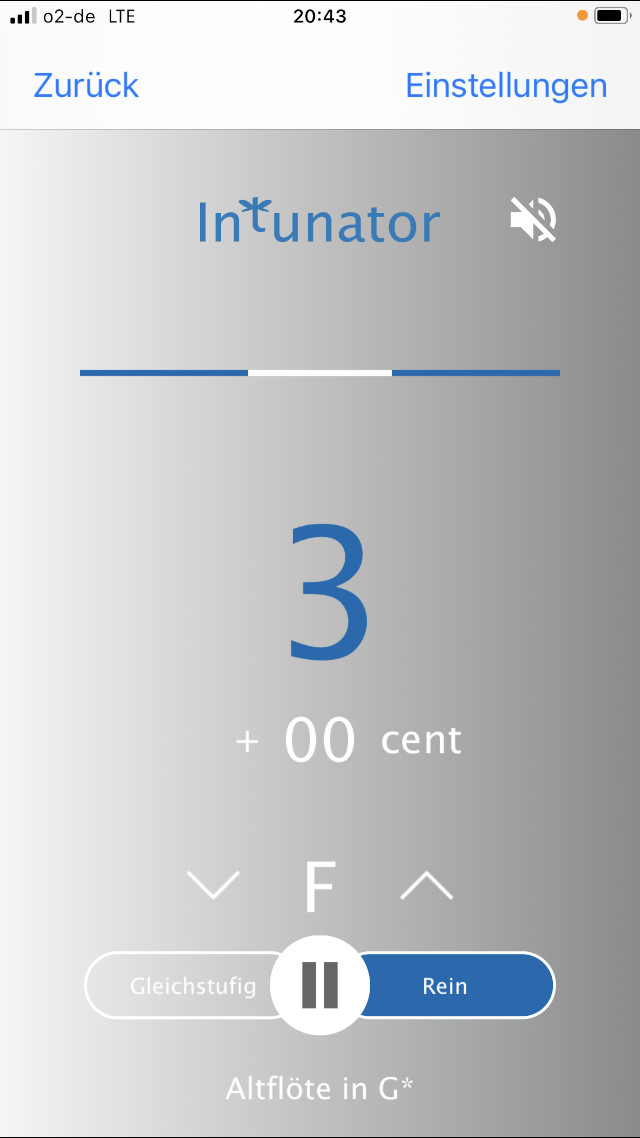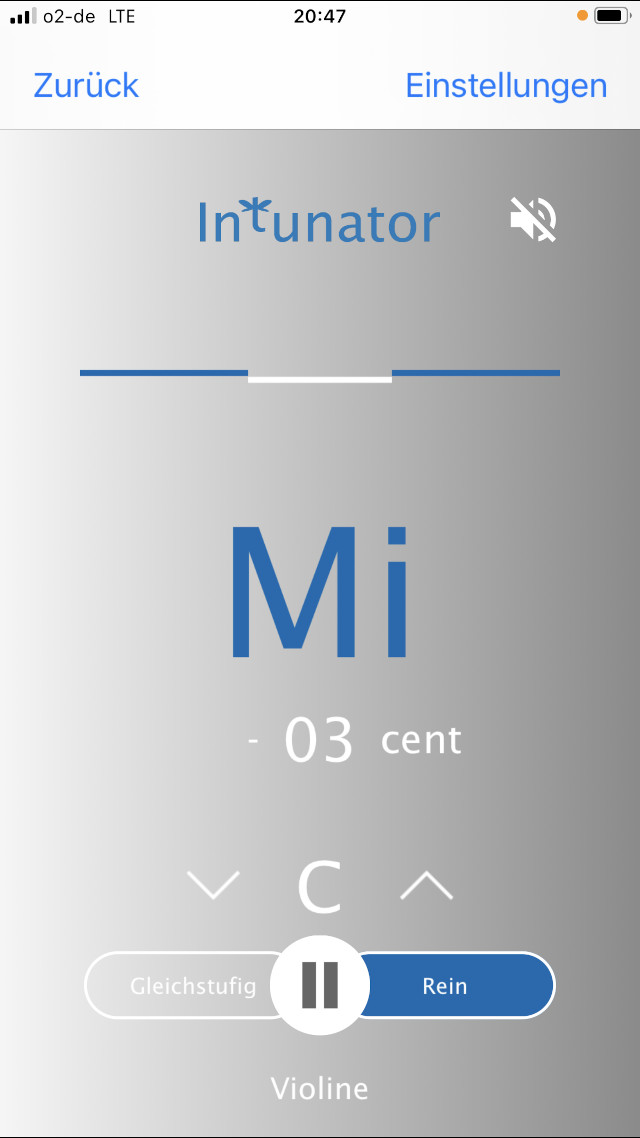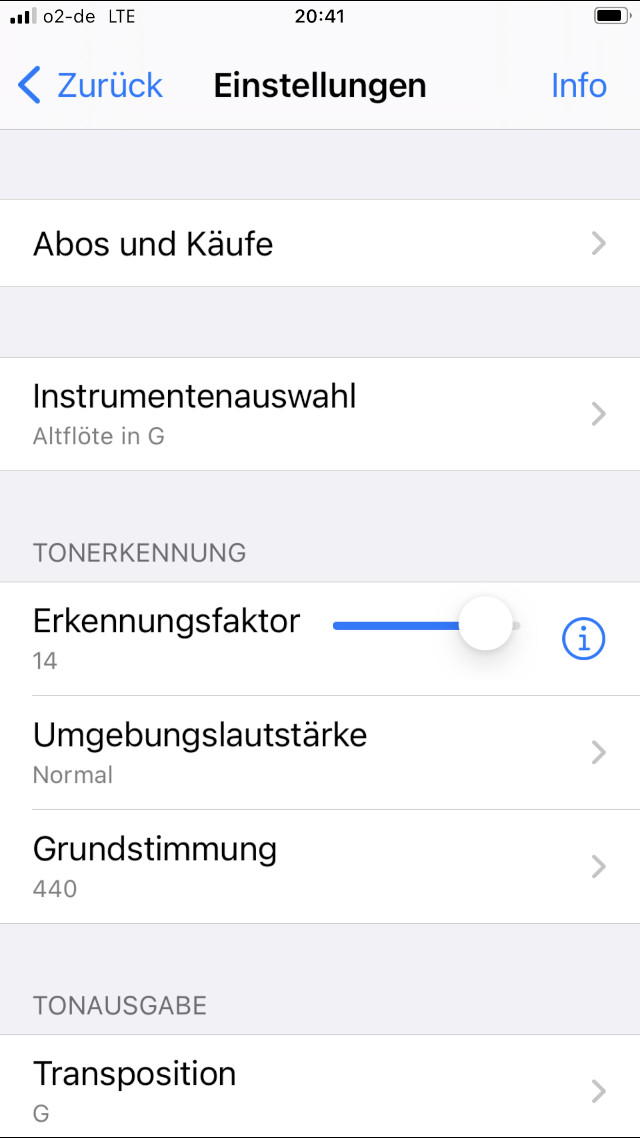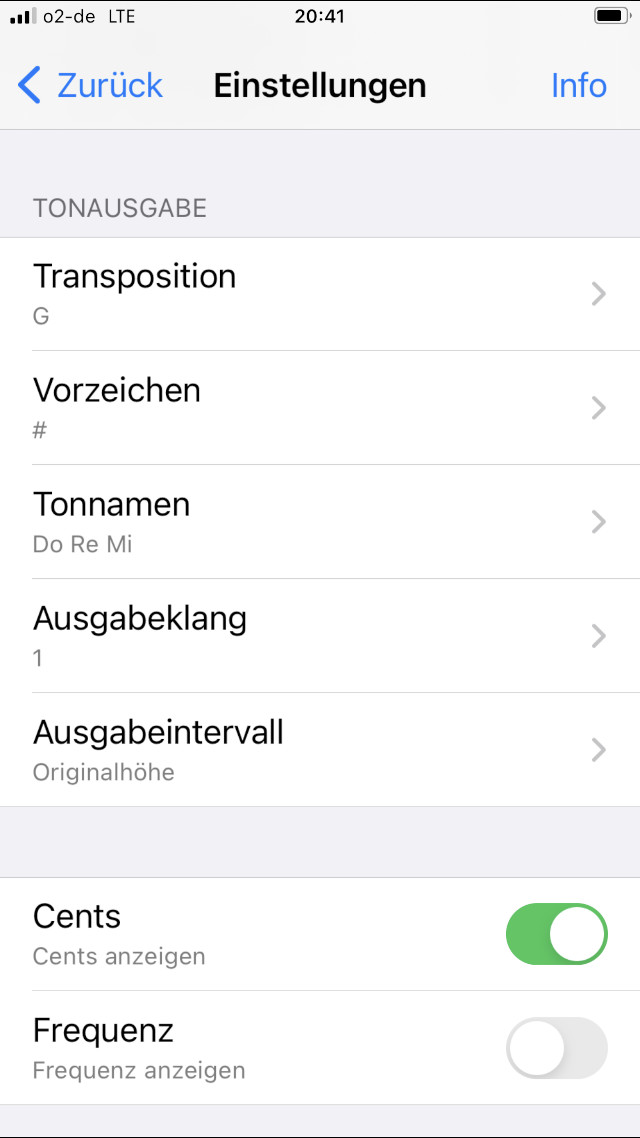FAQs
Was funktioniert besser: Kabel oder Bluetooth?
Der Intunator funktioniert am besten mit einem Kabel! Die Qualität des Kontrolltons nimmt bei Bluetooth-Übertragung deutlich ab, und die Reaktionszeit verlängert sich.
Mit welchem Kopfhörer kann man am besten mit dem INTUNATOR arbeiten?
Grundsätzlich kannst du mit jedem Kopfhörer arbeiten, sowohl kabelgebunden als auch über Bluetooth.
Offene Kopfhörer eignen sich allerdings besser, weil sich damit dein eigener Klang mit dem Kontrollton gut mischen lässt.
Unter Umständen macht es Sinn, das eine Ohr freizulassen.
Ein Tipp dazu:
Ein Tipp bei Kabelnutzung: Wenn du die Umgebungslautstärke in den Einstellungen auf ganz leise stellst, dann kannst du dein Handy während der Nutzung sogar in die Hosentasche oder die Hemdtasche stecken. Die Töne werden trotzdem erkannt und du kannst dich im Raum frei bewegen.
Ein Tipp bei Bluetooth-Nutzung:
Du kannst dein Handy auch irgendwo im Raum platzieren und dann in den Einstellungen die Umgebungslautstärke so auswählen, dass die Tonerkennung trotzdem gut funktioniert. Je leiser die Einstellung, desto empfindlicher die Tonerkennung.
Kann ich INTUNATOR auch ohne Kopfhörer benutzen?
Für das Intonationstraining über das Gehör ist das Hören des Kontrolltones unverzichtbar.
Die Tonausgabe über den Handylautsprecher ist nicht möglich, weil das Handy sich selbst aufnimmt und der Ton dann hängen bleibt. Allerdings kann der Kontrollton auch über eine externe Lautsprecherbox erklingen, sowohl kabelgebunden als auch über Bluetooth. Dabei musst du aber in den Einstellungen die Umgebungslautstärke auf sehr laut stellen, damit INTUNATOR nur dich erkennt und nicht das Lautsprechersignal.
Kann ich mit INTUNATOR auch Singen üben?
Ja, das ist mittlerweile möglich.
Du kannst zwischen den Stimmlagen Sopran, Alt, Tenor und Bass auswählen. Ohne Kontrollton (drücke den Tonaus-Button) zeigt dir die App als zuverlässiges Stimmgerät deinen gesungenen Ton an, wahlweise in CDE- oder DoReMi-Tonnamen. Mit dem Kontrollton kannst Du deine Intonation über’s Gehör trainieren. Dabei kannst Du zwischen gleicher, quintversetzter und oktavversetzter Tonhöhe wählen. Der Bordunmodus bietet dir als Sänger und Sängerin zusätzlich die Möglichkeit, zu einem frei wählbaren Dauerliegeton frei zu improvisieren oder Tonleiterübungen zu machen. Deine Töne werden dabei in Relation zum gehörten Grundton als Tonleiterstufen (1,2,3…) oder Solmisationsstufen (Do,Re,Mi…) angezeigt.
Kann ich mit INTUNATOR auch das Intonieren in reiner Stimmung trainieren?
Ja das geht! Im Bordun-Modus kannst du zwischen gleichstufig-temperierter und reiner Stimmung wählen. Dabei wird ein Grundton festgelegt, der als Dauerliegeton hörbar ist (im englischen auch Drone genannt). Du kannst dann in dieser Tonart frei darüber spielen und hörst alle deine Töne in Relation und im Zusammenklang mit dem eingestellten Grundton. Die Displayanzeige unterstützt dich dabei visuell mit den erkannten Tonleiterstufen, wahlweise in Stufenzahlen (1,2,3…) oder mit DoReMi-Namen. Dabei lässt die Umschaltmöglichkeit zwischen den beiden Stimmungssystemen einen direkten Vergleich zwischen gleichstufig-temperierter und reiner Stimmung zu. Dies ist besonders interessant und eindrücklich bei Terzen und Sexten.
Warum ertönt ab und zu die Oktave des gespielten Tones?
Der Tonerkennungsalgorithmus des INTUNATORS wurde so perfektioniert, dass alle Instrumente über fast sieben Oktaven nahezu fehlerfrei in ihrer Tonhöhe erkannt und ausgegeben werden.
Doch manchmal bedingt es das Obertonspektrum des gespielten Instrumentes, dass die Oktave (1. Oberton) tatsächlich lauter erklingt als der eigentliche Ton.
Und nur in diesen seltenen Fällen wird statt des gewünschten Tones dessen Oktave ausgegeben.
Betrachte die daraus resultierende Intonationsübung mit Oktave oder Quinte als zusätzliche Trainingsstufe auf dem Weg zu deiner perfekten Intonation.
Wie sollte die Umgebungslautstärke eingestellt werden?
Die empfohlene Grundeinstellung ist normale Umgebungslautstärke.
Je leiser die Einstellung, desto empfindlicher die App und desto mehr Töne und Außengeräusche werden erkannt. Wenn du dein Handy während der Anwendung z.B. verdeckt am Körper tragen möchtest (Hemdtasche, Hosentasche), oder das Gerät in größerem Abstand von dir ablegst, dann stelle die Umgebungslautstärke auf sehr leise.
Wenn du dein Handy während der Anwendung z.B. verdeckt am Körper tragen möchtest (Hemdtasche, Hosentasche), oder das Gerät in größerem Abstand von dir ablegst, dann stelle die Umgebungslautstärke auf sehr leise. Bei starken Nebengeräuschen stelle INTUNATOR einfach auf laute oder sehr laute Umgebungslautstärke. Dadurch werden weniger Signale aufgenommen, und damit kannst Du sogar während des Spielens im Orchester oder in der Bigband deine Intonation visuell überprüfen.
Was bedeutet die Grundstimmung von 442 Hertz und was bewirken Änderungen an dieser Einstellung?
Um gemeinsam mit anderen Musikern oder mit einem Playalong zu musizieren, bedarf es einer einheitlichen Grundstimmung.
Diese wird am sogenannten Kammerton A festgemacht, der in der Regel zwischen 440 und 444 Hertz liegt.
Nach dieser Frequenz richten sich im Verhältnis alle anderen Töne aus.
Die meisten Orchester stimmen heutzutage auf mindestens 442 Hertz ein, was der Grundeinstellung der App entspricht.
Was zeigt INTUNATOR auf dem Display alles an?
Hauptmodus:
Deine gespielten Töne werden mit Tonnamen auf dem Display angezeigt, entweder als CDE oder als DoReMi. Dafür stehen dir in der Instrumentenauswahl alle Transpositionsmöglichkeiten zur Verfügung, z.B. Trompete in B oder Alt-Saxophon in Es. Deine Intonation wird in Echtzeit mit allen Abweichungen grafisch mit einer farblich abgesetzten weißen Linie angezeigt. Hohe Linie bedeutet hohe Intonation, tiefe Linie bedeutet tiefe Intonation. Liegt die weiße Linie mit den zwei blauen auf gleicher Höhe, intonierst du perfekt. Auf Wunsch wird dir auch die genaue Centabweichung sowie die Tonhöhenfrequenz angezeigt.
Bordun-Modus:
Im Bordun-Modus werden die erkannten Töne in Relation zum ausgewählten Grundton als Tonleiter-Zahlenstufen 1-2-3 oder als Solmisationssilben Do-Re-Mi angezeigt. Auch hier kannst du an der weißen Linie zwischen den beiden blauen deine genaue Intonation ablesen.
Was bewirkt der Erkennungsfaktor?
Für jedes Instrument wurden die komplexen Tonerkennungseinstellungen der App so optimiert, dass alle Töne sicher erkannt werden.
Ganz besonders wirkt sich dies für tiefe Töne aus.
Somit wurde jedem Instrument in der Instrumentenauswahl entsprechend seines Tonumfanges ein bestimmter Tonerkennungsfaktor zugewiesen.
Sollten die tiefsten Töne dennoch nicht erkannt werden, dann wähle bitte in den Einstellungen einen kleineren Erkennungsfaktor aus.
Ab welchem Betriebssystem läuft die APP auf meinem Handy/Tablet?
Wie weit kann INTUNATOR meinem schnellen Spiel folgen?
INTUNATOR mit seiner einzigartigen Kontrollmöglichkeit über das Gehör wurde bis an die Grenze des technisch Möglichen entwickelt.
Und das Ergebnis ist überwältigend.
Du kannst relativ frei spielen, dich vom Einzelton bis zu Etüden und Musikstücken von der App begleiten lassen.
Erst in relativ hohem Tempo stößt auch INTUNATOR an seine Grenzen.
Die Grundidee der App muss aber an dieser Stelle hervorgehoben werden, nämlich die Unterstützung und das Training deiner Intonation über das Gehör.
Und für diesen Zweck bietet INTUNATOR ein sehr komfortables und einzigartiges Mitspieltempo.
(Anwendungstempo im Hauptmodus: 80 - 140 bpm, abhängig von Instrument, Betriebssystem und Handy-Modell)
Kann man die App auch kostenlos testen?
INTUNATOR STARTUP kann in der IOS Version kostenlos und in vollem Umfang getestet werden (Intonationstrainer incl. Stimmgerät Pro). Erst nach 4 Wochen musst du dich entscheiden, ob du die App kaufen oder mieten möchtest.
Das STIMMGERÄT PRO ohne Kontrollton steht dir 2 Wochen kostenlos zum Testen zur Verfügung.
Für Android ist diese Möglichkeit des Mietens und des kostenlosen Testens leider noch in Planung und in Arbeit. Wenn dir INTUNATOR nicht gefällt, kannst du die App nach dem Kauf gemäß den Google Richtlinien innerhalb von 2 Tagen (48 Stunden) auf dem Google Play Store zurückgeben.
Welchen Einfluss hat die Voreinstellung im Bedienassistenten?
Mit dem Bedienassistenten werden durch Auswahl eines Instrumentes zwei Einstellungen automatisch vorgenommen: die Transposition und der für jedes Instrument optimierte Erkennungsfaktor.
Dieser Erkennungsfaktor garantiert die Tonerkennung über den gesamten Tonumfang des ausgwählten Instrumentes.


